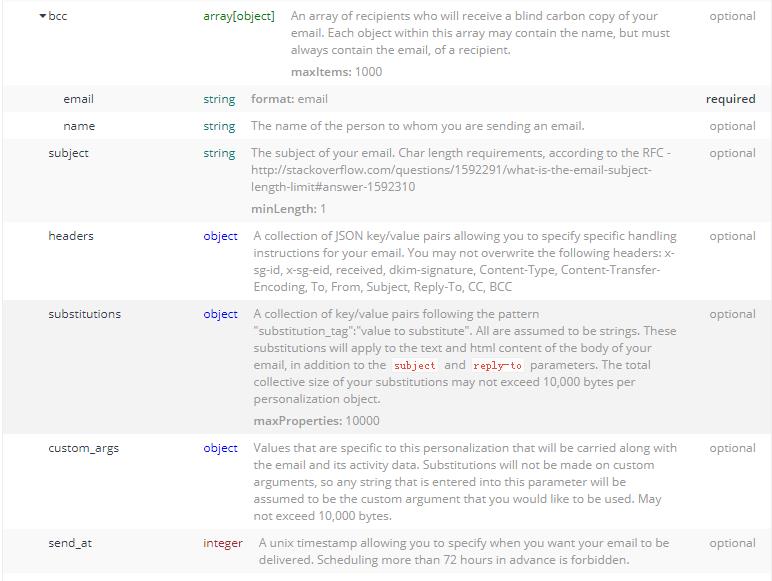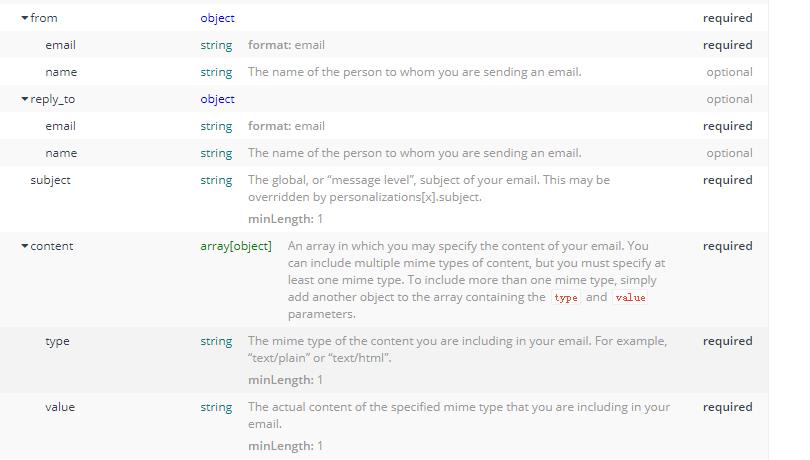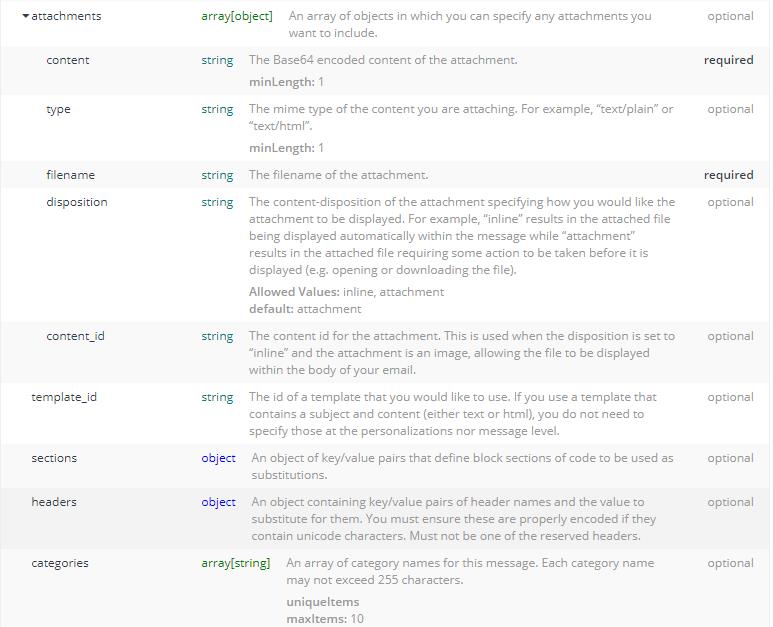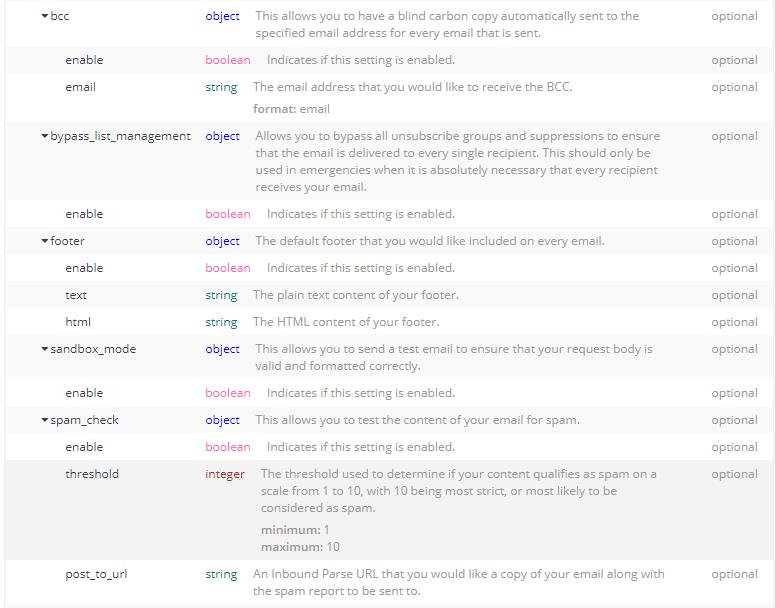Python-sendgrid郵箱庫的使用
Python中sendgrid庫使用
#幫助文件https://github.com/sendgrid/sendgrid-python
https://sendgrid.com/docs/ui/account-and-settings/
https://sendgrid.api-docs.io/v3.0/mail-send/v3-mail-send
1、註冊
https://sendgrid.com/註冊賬號,選擇語言型別,建立api-keys。
2、開發環境keys值設定
把建立的keys值放進去。開發環境的shell
Mac
Update the development environment with your
echo "export SENDGRID_API_KEY='YOUR_API_KEY'" > sendgrid.env
echo "sendgrid.env" >> .gitignore
source ./sendgrid.env
Sendgrid also supports local environment file .env. Copy or rename .env_sample into .env and update
Windows
Temporarily set the environment variable(accesible only during the current cli session):
set SENDGRID_API_KEY=YOUR_API_KEY
Permanently set the environment variable(accessible in all subsequent cli sessions):
setx SENDGRID_API_KEY "YOUR_API_KEY"
Install Package
pip install sendgrid
3、測試程式碼
# using SendGrid's Python Library
# https://github.com/sendgrid/sendgrid-python
import sendgrid
import os
from sendgrid.helpers.mail import *
def verification():
sg = sendgrid.SendGridAPIClient(apikey=os.environ.get('SENDGRID_API_KEY'))
from_email = Email("[email protected]")
to_email = Email("[email protected]")
subject = "Sending with SendGrid is Fun"
content = Content("text/plain", "and easy to do anywhere, even with Python")
mail = Mail(from_email, subject, to_email, content)
response = sg.client.mail.send.post(request_body=mail.get())
print(response.status_code)
print(response.body)
print(response.headers)
if __name__ == '__main__':
verification()
# import sendgrid
# import os
# sg = sendgrid.SendGridAPIClient(apikey=os.environ.get('SENDGRID_API_KEY'))
# data = {
# "personalizations": [
# {
# "to": [
# {
# "email": "[email protected]"
# }
# ],
# "subject": "Sending with SendGrid is Fun"
# }
# ],
# "from": {
# "email": "[email protected]"
# },
# "content": [
# {
# "type": "text/plain",
# "value": "and easy to do anywhere, even with Python"
# }
# ]
# }
# response = sg.client.mail.send.post(request_body=data)
# print(response.status_code)
# print(response.body)
# print(response.headers)
4、Plan
Plan分為三類:
1)、email api
2)、marketing campaigns(營銷活動)
3)、email api 和marketing campaigns(兩者一起)

5、SMTP
簡單郵件傳輸協議(Simple Mail Transfer Protocol,SMTP) 是在Internet傳輸email的事實標準
6、SendGridAPIClient引數情況
繼承自object。
初始化引數:
apikey: sendgrid需要使用的key。如果未提供的話,會在環境變數中查詢。
api_key: sendgrid需要使用的key,提供後面的版本相容,5.3,後就會被棄用。
impersonate_subuser:模仿subuser賬號,底層客戶端。
Host:api呼叫的基本的URL。
Opts:棄用引數的排程員。後面相容的版本用path引數,在6以後的版本會移除。
7、mail引數
(1)from_email 來自郵箱
(2)subject 主題
(3)to_email 給誰傳送
(4)content 正文
(5)get方法
方法裡面有多個條件。
字典形式儲存郵箱,正文和主題等。
Keys為:personalizations,個性化(裡面是元組,元組裡面是字典,裡面是主題,給誰傳送訊息),from(來自哪個郵箱),content(正文訊息)。
8、email引數
(1)email 郵箱
(2)name 名字
https://sendgrid.api-docs.io/v3.0/mail-send/v3-mail-send
9、headers
Authorization ,string ,1 ,validations,required
10、request body








11、response
400、401、413、 202
